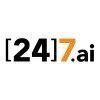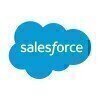Filter interviews by
Adobe LMS Administrator Interview Questions and Answers
Adobe LMS Administrator Interview Experiences
1 interview found
I applied via Referral and was interviewed before Apr 2022. There was 1 interview round.
(2 Questions)
- Q1. Creation of users & user groups
- Ans.
Creating users and user groups is a crucial task for an LMS administrator.
Create individual user accounts with unique login credentials.
Assign users to appropriate user groups based on their roles and responsibilities.
Ensure proper access permissions are granted to each user group.
Regularly review and update user accounts and groups as needed.
Examples: Students, Teachers, Administrators, Course Coordinators.
- Q2. Creation of catalogs
- Ans.
Catalogs are created to organize and categorize courses and learning materials.
Catalogs can be created based on subject, department, or any other relevant criteria.
Courses and learning materials can be assigned to multiple catalogs.
Catalogs can be updated or deleted as needed.
Catalogs can be used to control access to courses and learning materials.
Catalogs can be used to track learner progress and completion.
Interview Preparation Tips
Interview questions from similar companies

I applied via Naukri.com and was interviewed in Mar 2018. There were 2 interview rounds.
Interview Preparation Tips
Experience: Nature of the current job profile
General Tips: They call for walkin without provising detaila abput the the JD. Please go through the JD. If your profile does not match the requirement don't attend the interview, it is waste of your time. They will schedule to show the candidate footfall.
Skills: Communication, Body Language, Problem Solving, Leadership, Presentation Skills, Decision Making Skills
Duration: <1 week

I applied via Referral and was interviewed before Jul 2021. There were 2 interview rounds.

Easy question, maximum question on average, ages, pie chart,flow chart of coding, English comprehension, situation based question.
Interview Preparation Tips
- Puzzle
- Guesstimate

I applied via Referral and was interviewed before Jun 2020. There were 3 interview rounds.
Interview Questionnaire
3 Questions
- Q1. Asked me to create a PowerPoint on how would I help the sales team with the selling pitch
- Q2. Asked me to write an email summarizing my findings from the selling pitch deck
- Q3. Guesstimate - how many flights are handled by Bangalore airport on a daily basis
- Ans.
Around 600 flights are handled by Bangalore airport on a daily basis.
Bangalore airport is one of the busiest airports in India
It handles both domestic and international flights
On average, there are around 25-30 flights per hour
The number of flights may vary depending on the day of the week and time of the year
Interview Preparation Tips
What people are saying about Adobe







(1 Question)
- Q1. Tell me about yourself.
Interview Preparation Tips

Interview Questionnaire
1 Question
- Q1. Documentum Fundamental Concepts, Out of the Box functionalities used in the Product. Scenario Based questions with respect to client requirements

Team Lead Interview Questions & Answers
Automatic Data Processing (ADP)posted on 23 Feb 2022

Normal Test with some questions
(2 Questions)
- Q1. Technical questions on current role
- Q2. Roles and responsibilities on current role
Interview Preparation Tips

Consultant Interview Questions & Answers
Automatic Data Processing (ADP)posted on 28 May 2021
I applied via Recruitment Consultant and was interviewed in Apr 2021. There were 3 interview rounds.
Interview Questionnaire
3 Questions
- Q1. Obviously about oops.
- Q2. Printing reverse of string without using inbuilt function and start printing from last index
- Ans.
Printing reverse of string without inbuilt function and start printing from last index.
Iterate through the string from last index to first index and append each character to a new string.
Use a loop to iterate through the string and concatenate each character to the new string.
Print the new string in reverse order.
- Q3. Printing reversed words in a string without using inbuilt functions
Interview Preparation Tips

I applied via Recruitment Consulltant and was interviewed in Nov 2022. There were 2 interview rounds.

(3 Questions)
- Q1. 1. Tell me about your self 2. How will you allocate resource and what are the steps, what should be consider before allocating resource ? 3. How will you resolve conflict
- Ans.
Answering interview questions about resource allocation and conflict resolution.
When allocating resources, consider the project requirements, team capabilities, and available resources.
Steps for resource allocation include identifying project needs, assessing resource availability, prioritizing tasks, and assigning resources accordingly.
Before allocating resources, factors like budget, time constraints, and skill sets ...
- Q2. How will u allocate resources (Steps) what do we need to consider beforce allocation ?
- Ans.
Resource allocation requires careful planning and consideration of various factors.
Identify the goals and objectives of the project
Assess the available resources and their capabilities
Prioritize the tasks and allocate resources accordingly
Consider the timeline and deadlines
Monitor and adjust the allocation as needed
- Q3. How will u deal with conflict in resource management
- Ans.
I will deal with conflict in resource management by promoting open communication, prioritizing tasks, and finding compromises.
Encourage open communication to address conflicts and concerns
Prioritize tasks based on urgency and importance
Find compromises that satisfy all parties involved
Delegate responsibilities effectively to avoid resource conflicts
Use conflict resolution techniques such as negotiation and mediation
Pro...
Interview Preparation Tips
1. Don't belive salesforce ratings all are fake.
2. The attrition rate is high and there are lot of office politics.
3. There is no values for employee contribution.
4. I have been scammed by saleforce talent team and the third party recruiters. I also reported this incident in ethicspoint but till now I haven't received proper resolution and appropriate response. Higher officials tried to conceal the case. Due to salesforce bad hiring choas I lost other opportunity . They haven't took any action on vendor and 2 employees. This shows that how they are empathetic and professional, It also clearly indicates that they are fake.
5. In my experiannce Saleforce resource management team (Bangalore) HR, Directors are biggest liars. They are unprofessional with lack of empathy. they are not honest.


(2 Questions)
- Q1. SAP Hana technical questions
- Q2. Hana technical questions
Interview Preparation Tips
hana
hana
s/4 hana interview was technical and coding based
Adobe Interview FAQs
Tell us how to improve this page.
Adobe Interviews By Designations
- Adobe Software Developer Interview Questions
- Adobe Product Intern Interview Questions
- Adobe Computer Scientist Interview Questions
- Adobe Member Technical Staff Interview Questions
- Adobe Software Engineer Interview Questions
- Adobe Software Developer Intern Interview Questions
- Adobe Computer Scientist 2 Interview Questions
- Adobe Product Manager Interview Questions
- Show more
Interview Questions for Popular Designations
Overall Interview Experience Rating
based on 1 interview experience
Difficulty level
Duration
Interview Questions from Similar Companies
Adobe LMS Administrator Reviews and Ratings
based on 1 review
Rating in categories
|
Computer Scientist
492
salaries
| ₹22.2 L/yr - ₹70 L/yr |
|
Technical Consultant
311
salaries
| ₹7.5 L/yr - ₹28.5 L/yr |
|
Computer Scientist 2
295
salaries
| ₹28 L/yr - ₹102 L/yr |
|
Software Engineer
278
salaries
| ₹8 L/yr - ₹30 L/yr |
|
Senior Software Engineer
245
salaries
| ₹13.1 L/yr - ₹55 L/yr |

Salesforce

Oracle

Microsoft Corporation

Amazon
- Home >
- Interviews >
- Adobe Interview Questions












